Excerpts from Jim Conrad's
Naturalist Newsletter
from the June 4, 2017 Newsletter issued from Rancho Regenesis in the woods ±4kms west of Ek Balam Ruins; elevation ~40m (~130 ft), N20.876°, W88.170°; north-central Yucatán, MÉXICO
SAPRANTHUS: ALMOST AN ANNONA
This week a ten-ft-tall tree with slender, brittle branches has been flowering beside the hut, the flowers emerging as leaves expand with the advent of this year's rainy season. Below, you can see the handsome, greenish flowers turning burgundy as they mature, dangling like Christmas ornaments from their branch:
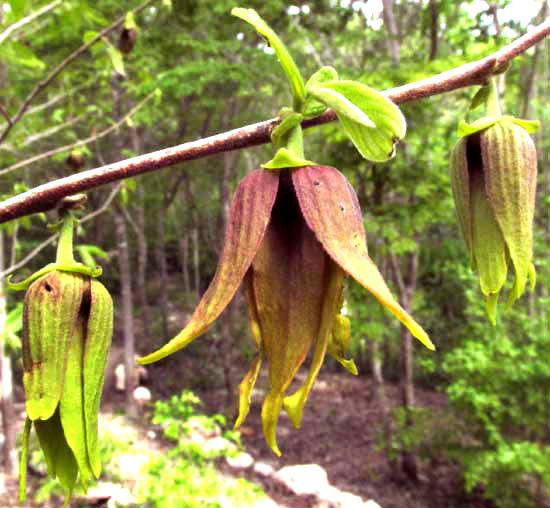
These blossoms are very similar to those we looked at just two weeks ago in this Newsletter. Those were blossoms of the Sweetsop/ Saramuyo, a small tree much planted in this area for its super-sweet, juicy fruits, one of the genus Annona in the Custard-Apple/ Pawpaw Family, the Annonaceae. You can see the Saramuyo flower from two weeks ago at www.backyardnature.net/n/17/170521ao.jpg
Not only are the flowers very similar but also the Saramuyo's leaves were shaped and mantled with a velum of short, dense, soft hairs just like the expanding leaves on the small tree next to the hut. Below, you can see the hut tree's young leaves:
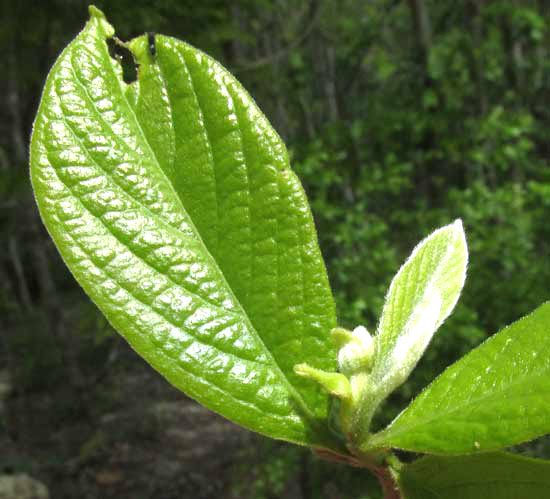
The hut tree looked like it was growing wild, not planted, plus other trees of its kind grow scattered in the surrounding woods and definitely are not planted, so -- since the cultivated Saramuyo's ancestors were tropical American -- I wondered whether the hut tree might be the Saramuyo's living ancestor. That thought was abandoned when a hut-tree blossom was broken open, revealing what's shown below:
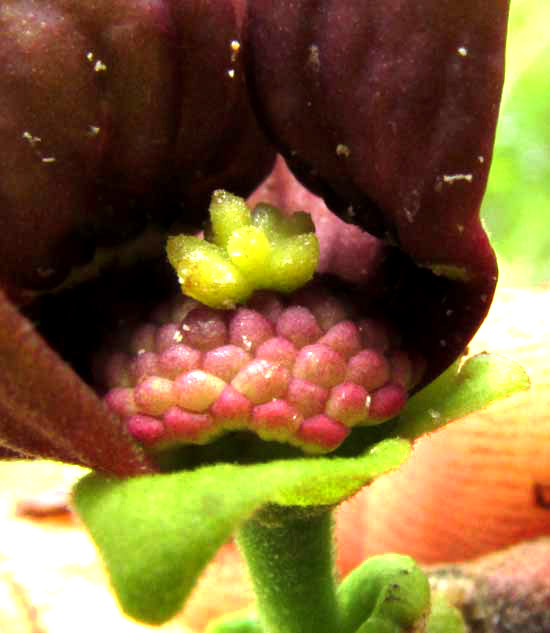
That's not the same as can be seen inside a Saramuyo flower, shown at www.backyardnature.net/n/17/170521an.jpg
The main difference is that in the Saramuyo's flower, those green things atop the purplish bumps in the hut-tree's blossom don't exist. There's not even a hint of them in Saramuyo flowers. This was something else. I took a flowering twig to some Maya friends who were working nearby and asked what kind of fruit the hut tree produced.
"Like a cluster of grapes," Gonzalo said, "each member of the cluster also about the size of a grape.""
Fruits of the genus Annona are shaped somewhat like potatoes, so now I knew we had a genus of the Custard Apple/ Pawpaw Family I'd not encountered before.
It's SAPRANTHUS CAMPECHIANUS, native from southern Mexico to Costa Rica. It bears no commonly used English name, so we'll just call it Sapranthus here, maybe the Campeche Sapranthus.
I'm looking forward to watching this remarkable species' fruits develop, seeing how something like a cluster of grapes can develop from a single flower.
from the June 18, 2017 Newsletter issued from Rancho Regenesis in the woods ±4kms west of Ek Balam Ruins; elevation ~40m (~130 ft), N20.876°, W88.170°; north-central Yucatán, MÉXICO
SAPRANTHUS FLOWER UPDATE
Now Sapranthus flowers' petals and stamens have fallen off, leaving behind large, green sepals framing a cluster of fuzzy pistils -- the female parts -- as shown below:
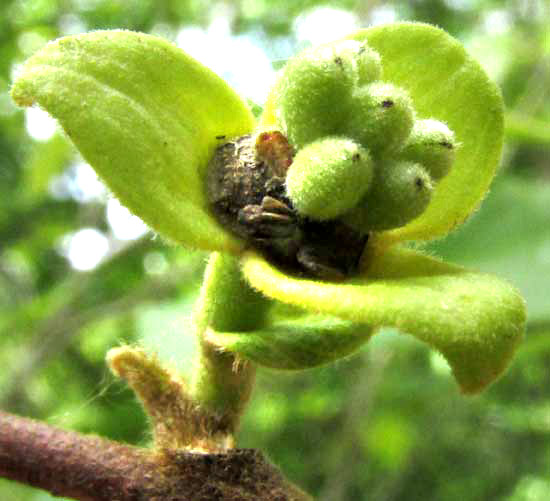
Earlier I wrote that it'd be interesting to watch how a single flower can mature into a something like a cluster of grapes. Now we're seeing how it might be possible.
from the July 16, 2017 Newsletter issued from Rancho Regenesis in the woods ±4kms west of Ek Balam Ruins; elevation ~40m (~130 ft), N20.876°, W88.170°; north-central Yucatán, MÉXICO
SAPRANTHUS FRUIT UPDATE
We've been documenting the Sapranthus's developing fruit -- it's an aggregate fruit -- and below you can see what it's become nowadays:
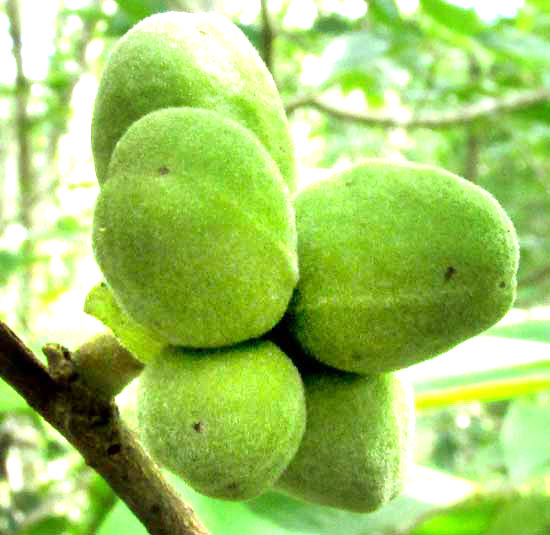
from the September 3, 2017 Newsletter issued from Rancho Regenesis in the woods ±4kms west of Ek Balam Ruins; elevation ~40m (~130 ft), N20.876°, W88.170°; north-central Yucatán, MÉXICO
SAPRANTHUS FRUITS ALMOST RIPE
Now the fruiting cluster is almost mature, as shown below:
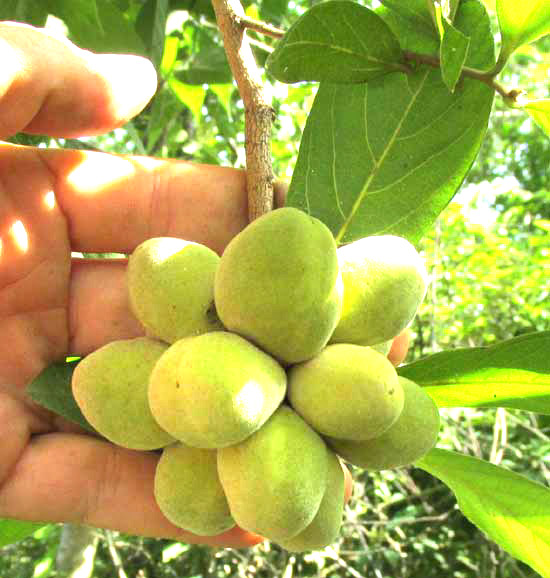
I'm not waiting to photograph them when they're perfectly ripe because my experience with fruits of this family, the Custard Apple or Pawpaw Family, the Annonaceae, as that as soon as the fruits become a little mature, or even before, they are such sweetly fragrant, succulent morsels that wild critters eat them before I get to them.